Intro to Viking Aesthetics
Viking art is estimated to have started at the end of the 8th century. It was first developed by the Viking tribes of Scandinavia in territories that we now know as Norway, Denmark, and Sweden. Vikings decorated almost everything with elaborate carvings and contrasting super-positioned materials. Currently, Viking art is mostly recognized by runes or carvings from recognizable aspects of their mythology.

Runes are symbols from the runic alphabet or Elder Futhark, used by many Germanic tribes to communicate before adopting the Latin alphabet. Unlike the Latin alphabet, the runic alphabet is believed to carry a corresponding meaning within each of its runes. Each rune’s meaning was philosophical and magical, they correspond to the sound and visual form of the rune’s name, and some were strongly tied to the mythology. For example, the Tiwaz rune was associated with the god Tyr, a war god, and upholder of law and justice. Therefore, Vikings would engrave the Tiwaz rune in weapons, believing that the rune would bring them power from the gods to succeed in battles against enemies who wronged them. Rune casting has lingered to the day as part of paganism, witchcraft, and Viking culture admirers.
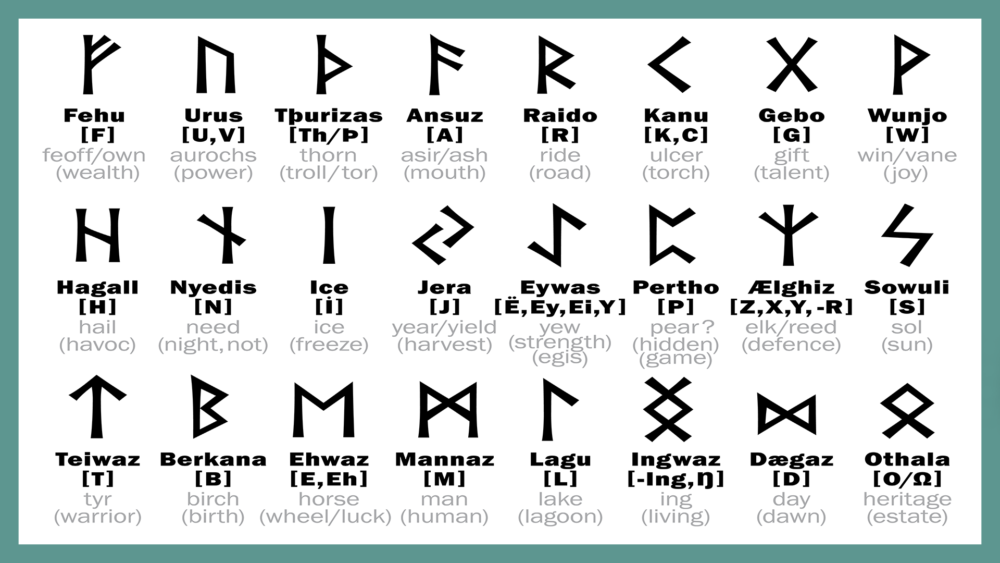
The Viking aesthetic is not just runes; it is also composed of very intricate motifs representing animals, people, and knots (like those seen in Celtic art). Most of these patterns and figures were engraved or made from wood, organic materials (bones, animal hides, etc.), metals, and rocks. The styles of these patterns also evolved over the years and are now segmented into phases.
Oseberg Style [775-880 A.D.]: famous for its intertwining zoomorphic patterns of “Gripping Beasts” and “Ribbon-Animals” as well as ambiguous forms.
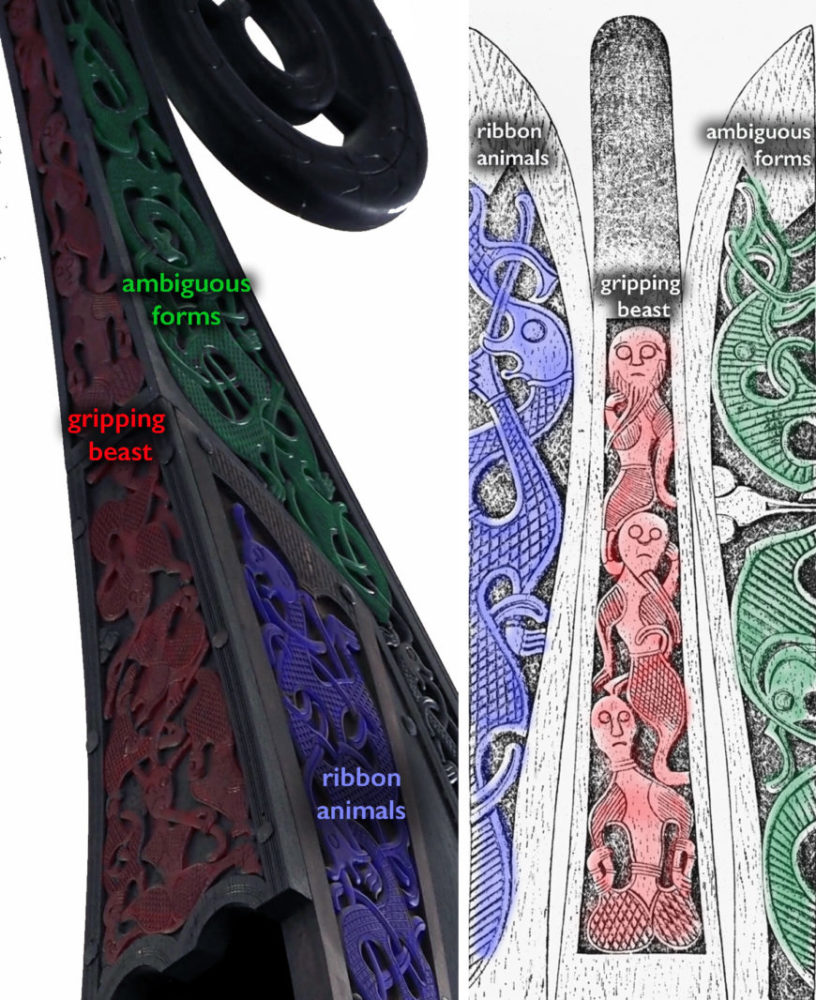
Borre Style [840-970 A.D]: creatures in ornaments more prominent than in Oseberg Style. It was characterized as almost circular in style and very compact, swarming the viewer with décor.

Jellinge Style [900-975 A.D]: markedly stylized and band-shaped animals. It features fine lines and dynamic movement in ribbon-like S-shapes.

Mammen Style [960-1025 A.D]: adds tendrils, dots, spirals, and other features to the Jellinge Style. The style was named after finding a ceremonial axe near the Danish village of Mammen.
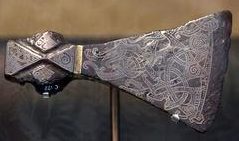
Ringerike Style [990-1050 A.D]: This style adopted plant motifs due to the increased interaction between the Norse and other cultures in the European, African, and Asian continents. The Ringerike style has a more taut and evenly curved scroll than in the one used in Mammen, and its tendrils are also far more disciplined. This phase also experienced plenty of metalwork ornamentation, especially with copper. Architecture, weapons, ivory carvings, and runestones became more common.

Urnes Style [1050-1125 A.D]: features elegant and schematic forms. Christianity had become more widely accepted over Scandinavia and, with it, the Romanesque aesthetics. However, in the Urnes stage, figure-eight and multi-loop compositions were employed, and animals were extremely stylized.

Orlog: A Viking Board Game
Origin
Orlog is a two-player board game featured in the Viking-themed videogame Assassins Creed Valhalla. The game simulates a battle between two sides; the objective is to reduce the enemy’s health points from fifteen to zero. This is a chance and strategy game; skill is required to defeat the enemy, not just luck. The dice rolled represent attack and defense. They also grant you points to use Norse God’s abilities.

Components (per player)
- 6 wooden dice with symbols representing axes, arrows, shields, Gjermundbu helmets, and hands.
- 15 Health Point beads (HP)
- 1 die casting bowl
- 24 God Favor tiles (GF)
- 3 out of 20 available metal god figurines (Thor, Idun, Vidar, Ullr, Heimdall, Baldr, Brunhild, Freyr, Hel, Skadi, Skuld, Frigg, Loki, Freyja, Mimir, Bragi, Odin, Var, Tyr, and Thrymr.)
- Leather mat (the two players share this)
How to play
- To start, the players flip a coin and call Heads-or-Tails. Whoever wins begins rolling.
- The player rolls the dice in the bowl and selects which dice he wants to keep by taking them out of the bowl and placing them on the mat. If a die lands outside of the bowl, at an angle, or on top of another die, then that die must be rerolled. Once the turn is over, the next player does the same. This step is repeated twice (three casts per player total). At the end of the third cast, the player must play all the leftover dice regardless of what was rolled.
- The resolution phase represents the battle. For each die that has etched borders, the player receives a GF tile. The player who rolled first attacks with axes; these are blocked by the other player’s helmets. Then the second player attacks with axes, and the first player blocks with helmets. Similarly, the same procedure applies to arrows, which are blocked by shields. Any attacks that are not blocked result in damage, equal to one HP bead taken out of the game. Finally, the hand dice steal one GF tile from the other player.
- The second turn starts by switching the player who rolls first. Players can now spend the GF tiles at the beginning of the resolution phase to use the abilities corresponding to their selected Norse God figurines. Each god has 3 abilities, and the effect increases as the GF tile cost increases. Some abilities apply at the start of the resolution phase and some at the end. The ability is not applied, and the tiles are not spent if the player loses tiles during the resolution phase and cannot afford the ability cost at the end. Once an ability is selected at the beginning of a turn, it cannot be changed. Only one ability is allowed per turn.
Manufacturing
-
Dice
To make the dice, I looked around for scrap wood that could be cut into cubes. I then sketched the dice patterns onto the dice using a pencil. Finally, I used a wood burner (like a soldering iron) to heat engrave the sketched figures into the dice. This process was difficult since the figures were so small and required high precision. I am new to pyrography, so it took some practice to get good results.
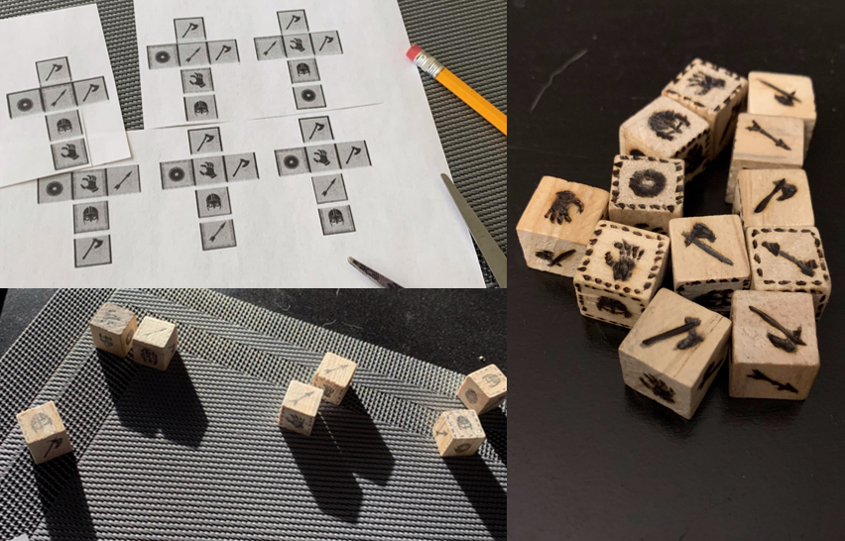
-
Die Casting Bowls
My initial idea was to find round cuts of pine tree wood and cut the inside to make a flat-bottom bowl. However, I found some ceramic tiles that looked like they would make an interesting stone-like bottom for a bowl. I found a scrap canvas stand leg and cut it to make the surrounding edges of the bowl. Finally, I sketched and engraved a Vegvísir symbol on the tile using a Dremel with a ceramic cutting tool. I chose not to decorate the side pieces of wood yet. I’m planning to either get the wood covered in mud to darken the color or slightly burn it with a torch to achieve a similar result.
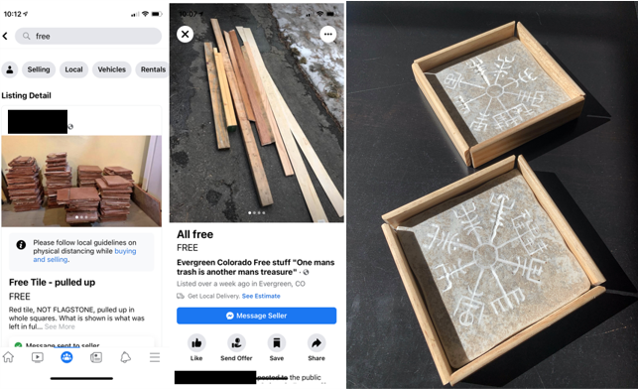
-
Leather Mat
This piece is just a rectangular leather piece that I purchased at Art Parts in Boulder, CO. The mat has no added decorative components, and it just works as a protective layer between the table and the pieces. However, it does add to the rustic feel of the Viking aesthetic.
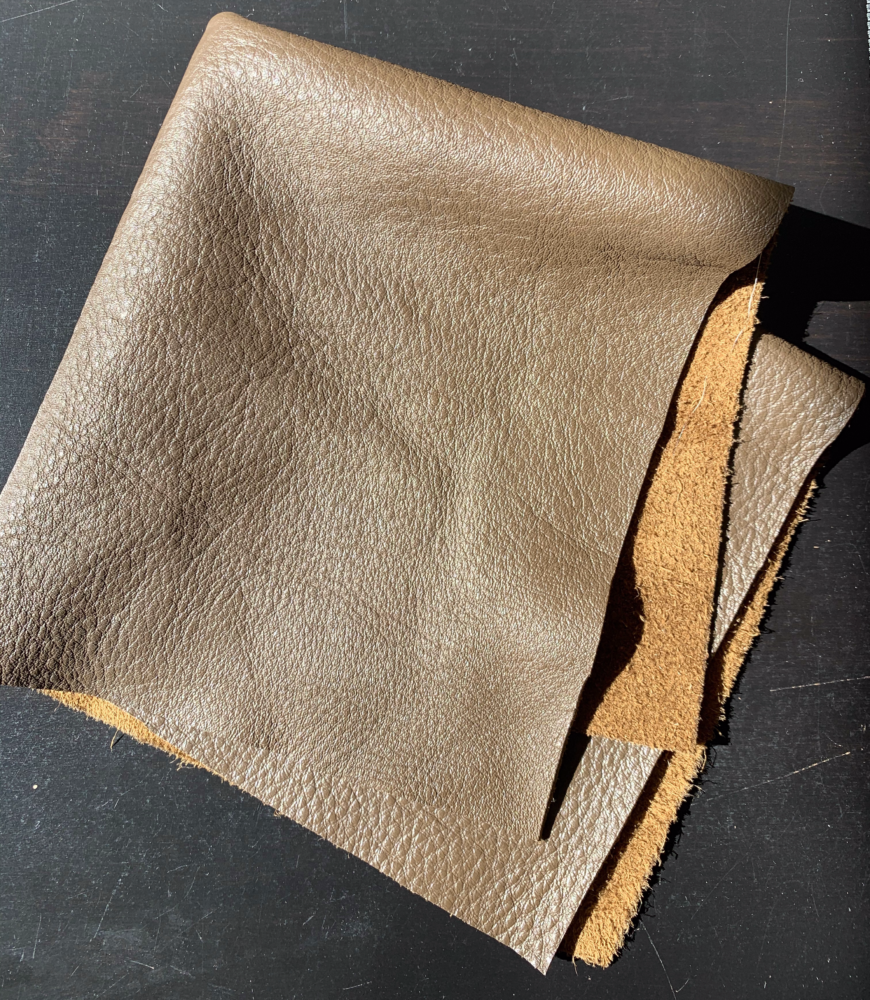
-
Health Point Beads
I initially planned to break glass and use a tumbler to create frosted sea-glass. However, it was hard to break and tumble the glass into pieces that were the same size. Instead, I used green glass beads that I found at the Dollar Store. These beads look more like those in the video game but lack the Viking aesthetic’s rustic aspect.
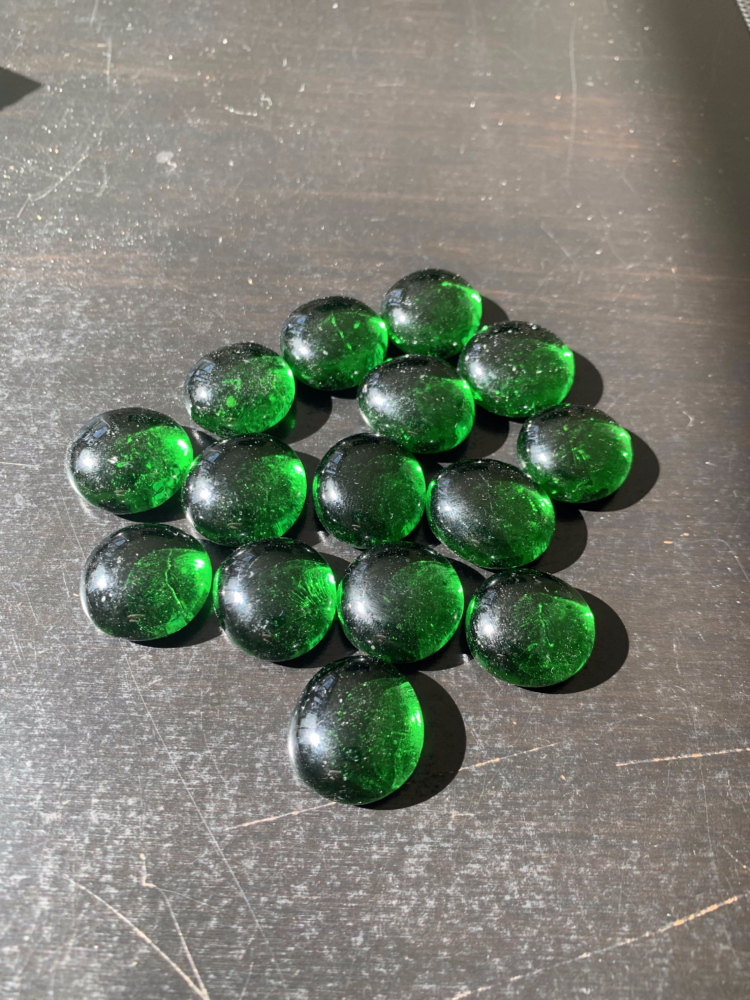
-
Storage Container
The storage container is not part of the videogame, but I thought it would be a good idea to keep each player’s dice and glass beads separate when the game is stored away. These containers are wooden box chests that I found at the Dollar Store. I heat engraved the direct translation of the word ‘Orlog’ from the Latin alphabet to the Elder Futhark on the box’s top. Then I heat engraved the runes Wunjo (represents joy) and Pertho (represents games) onto the box’s sides. Finally, I sketched and engraved an intertwining pattern on the box, as the Vikings would do to decorate their artifacts in the Oseberg style era.
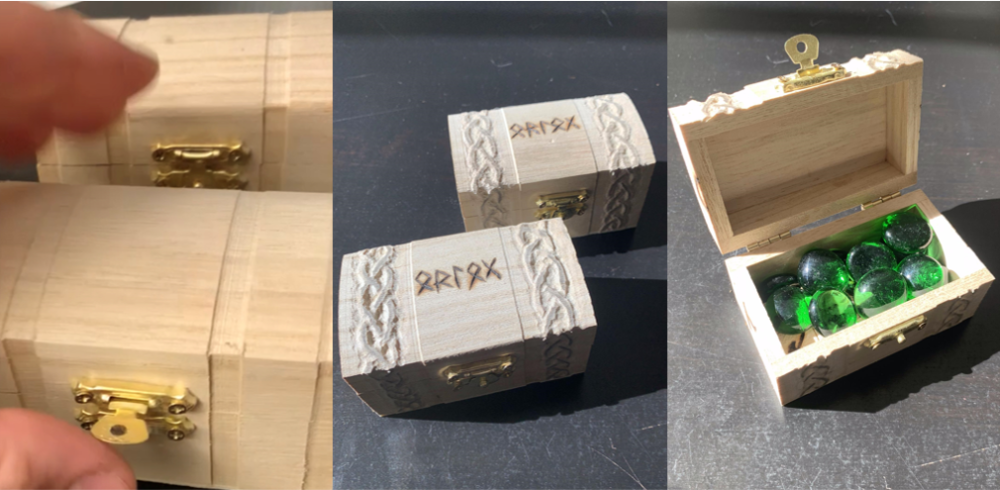
-
God Favor Tiles
I found these small glass tiles in the Art Parts store in Boulder. These tiles are supposed to have a Bowen Knot on them, so I thought about drawing the square symbol on the glass using a glass marker. However, the result was undesirable since the ink wouldn’t stick well and would easily smear. Instead, I burned the white on the bottom part of the tile with a lighter to give it a more rustic appearance and drew the knot on this surface with a metallic gold marker.
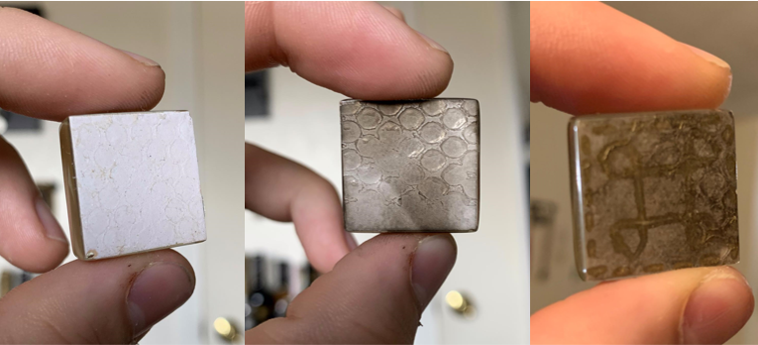
-
God Favor Figurines
These were by far the most difficult components to make. I wanted to make these out of metal, but there were no available manufacturing facilities that could laser cut metal. One manufacturing center told me they could laser cut them on wood and then paint them metallic gold. However, it would cost $2400 to make it. I decided to buy a 12”x12” sheet of 0.15” thick 353 Brass since I couldn’t find this much soft metal as scrap. I used a jigsaw with an edge guide to cut 1”x 2” strips of brass. I then sketched the Norse Gods from the game onto these metal pieces and used a fine tip engraver on a Dremel to engrave the details. The level of detail in these figurines resembles the Mammen style of the Viking era.
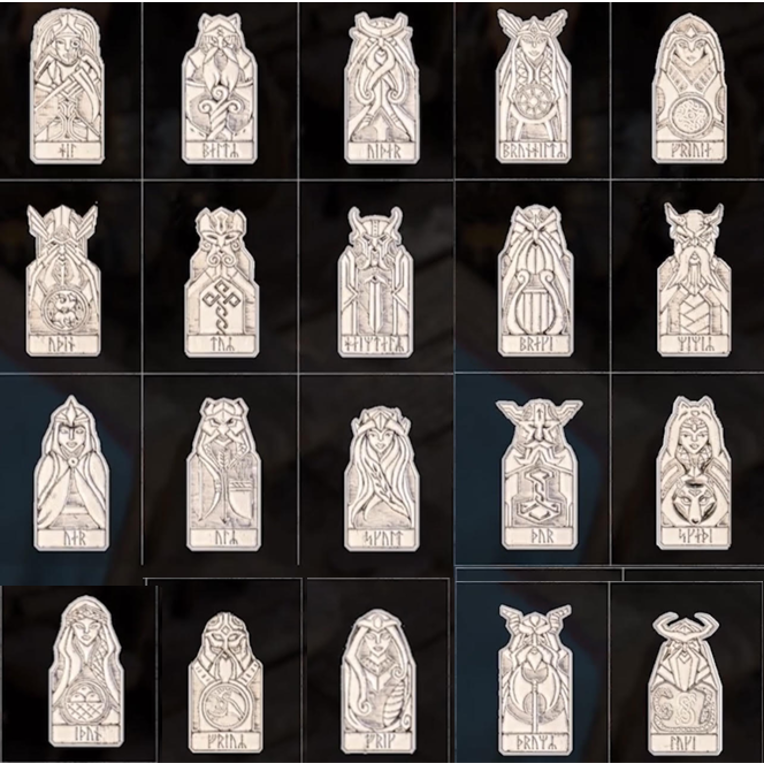
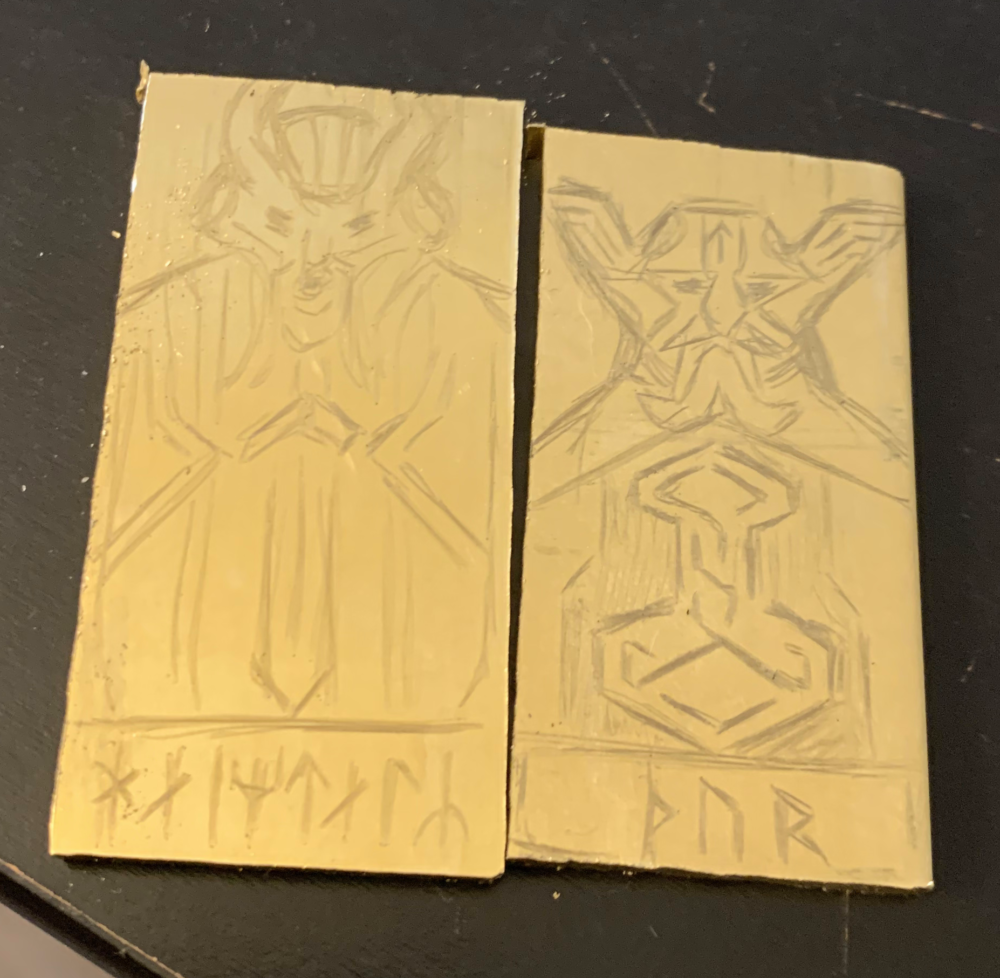
Once the figurines were engraved, I used a high-speed cutter to trim the figures’ sides to match each god’s shapes. This process was strenuous; I could only finish 12 out of the 20 gods before the project deadline. However, these pieces are not essential for the game, and only six can be used per match. Additionally, in the videogame, you start with only one (Thor) and must win matches to unlock additional gods. Another downside of coming up short is that I have no duplicates, so two players can’t select the same god for a match. I selected and manufactured my favorites; I can make more later:
*Note: abilities detailed as [(x,y),(x,y),(x,y)] where x is the cost in GF tiles and y is the ability’s effect*
Thor – Thor’s Strike
The God of Thunder shows a long beard and a winged helm while holding his mighty hammer, Mjölnir. He deals extra damage to the opponent after the resolution phase. [(4,2),(8,5),(12,8)]

Odin – Odin’s Sacrifice
The All-Father, the high one, the one-eyed, the raven-feeder… The wise ruler of Asgard shows only one eye while holding a shield representing his two ravens Huggin and Muninn. His ability relates to his sacrifice in which he sacrificed his eye and hung himself for nine days to gain knowledge of the worlds and understand the runes. Odin’s ability allows the player to sacrifice any number of HP beads to gain GF tiles at the end of the resolution phase. [(6,+3GF/HP),(8,+4GF/HP)(10,+5GF/HP)]
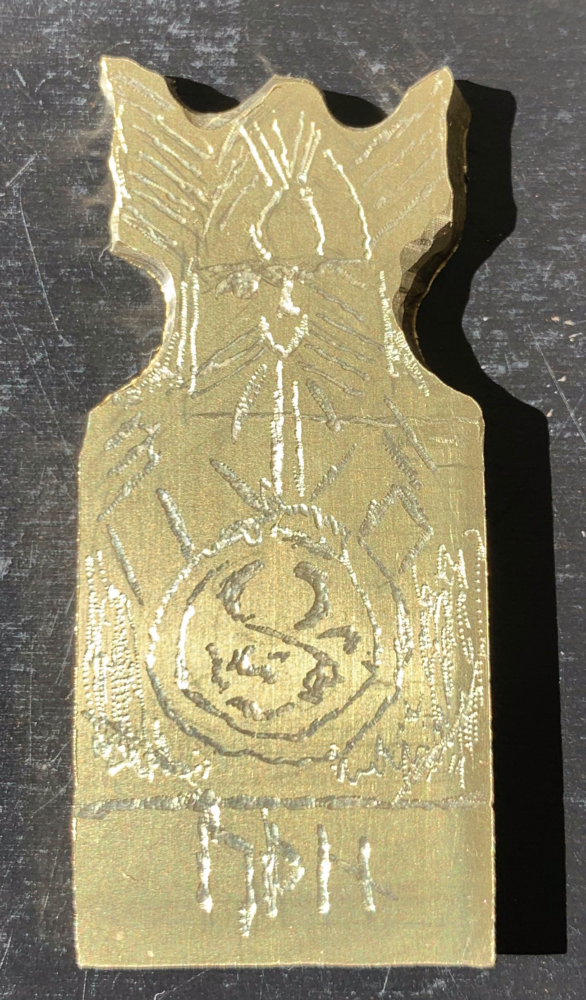
Loki – Loki’s Trick
The God of Mischief, the trickster, and father of the mighty wolf Fenrir. The figurine features his helm’s long horns as well as a subtle evil grin. The mischievous god will help the player by banning a certain number of the opponent’s dice before the resolution phase. [(3,1),(6,2),(9,3)]

Heimdall – Heimdall’s Watch
The protector of Asgard, he watched over the Bifrost bridge and has foreknowledge of events. He features his sword Hǫfuð in the figurine. As the player’s guardian and protector, Heimdall replenishes health for every block the player has during the resolution phase. Each block instantly replenished health. [(4,1HP/block),(7,2HP/block),(10,3HP/block)]
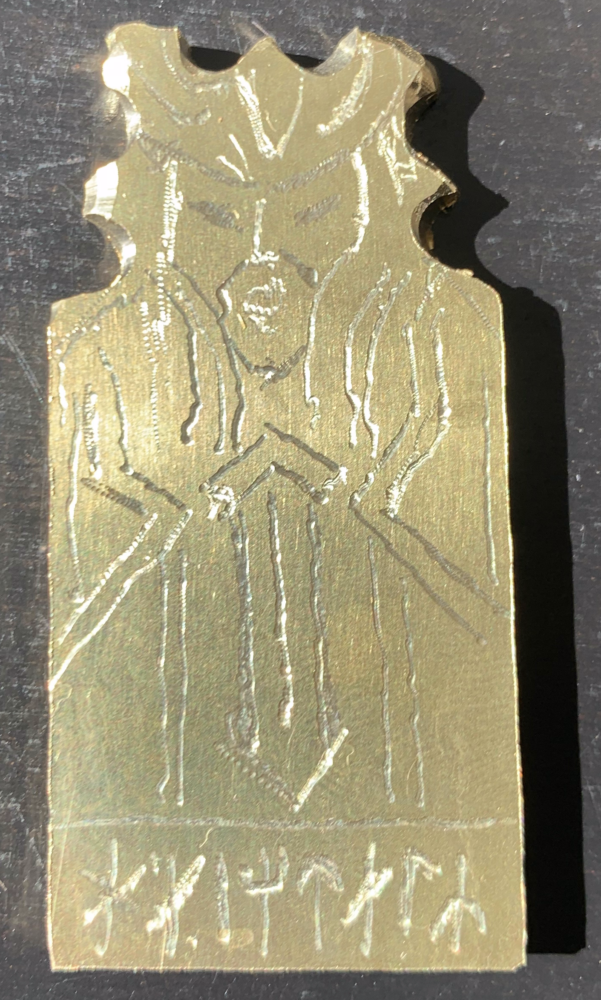
Hel – Hel’s Grip
The goddess of death features a scythe and a half demonic face while wearing a crown that defines her as the ruler of Niflheim. This daughter of Loki’s ability allows the player to recover HP for each axe damage dealt to the opponent. [(6,1HP/axe attack), (12,2HP/axe attack), (18,3HP/axe attack)]
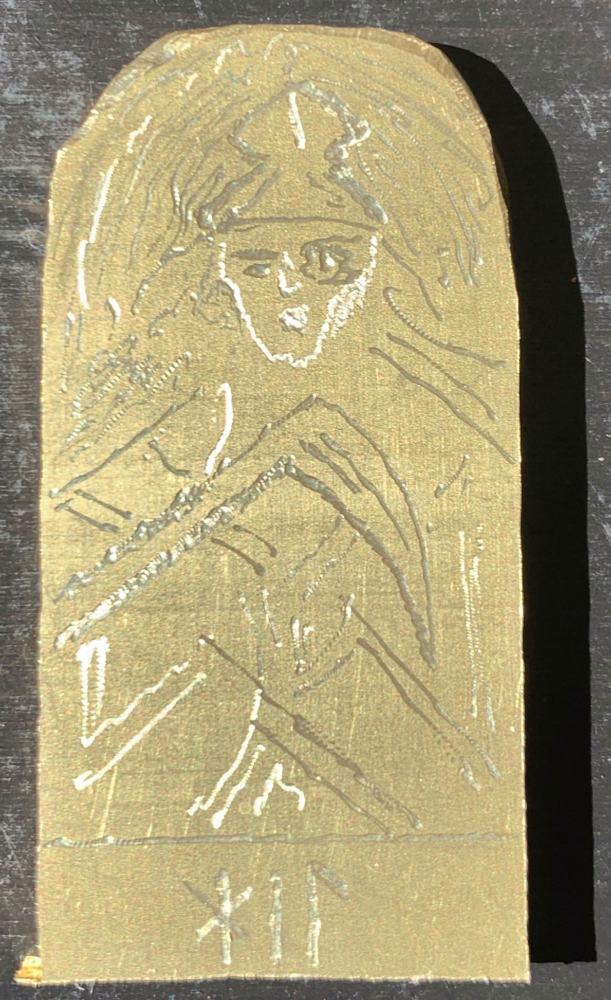
Freyja – Freyja’s Plenty
The Goddess of Beauty, Love, Fertility, Sex, and War. She features her necklace Brísingamen, as well as a shield with an ornate and intricate pattern. Her plentiful ability allows the player to roll additional dice. Write down or memorize the dice that you have and reroll the specified number to obtain the extra. [(2,1),(4,2),(6,3)]

Skadi – Skadi’s Hunt
Goddess of the Hunt, Winter, Skiing, and Mountains. My personal favorite! This Jotunn giantess wears her cape made from a wolf’s hide and features a wolf next to her (the animal associated with her). Her incredible skills multiply the number of arrows rolled by the player. If planned appropriately, this ability can end a game quickly. [(6,x2),(10,x3),(14,x4)]
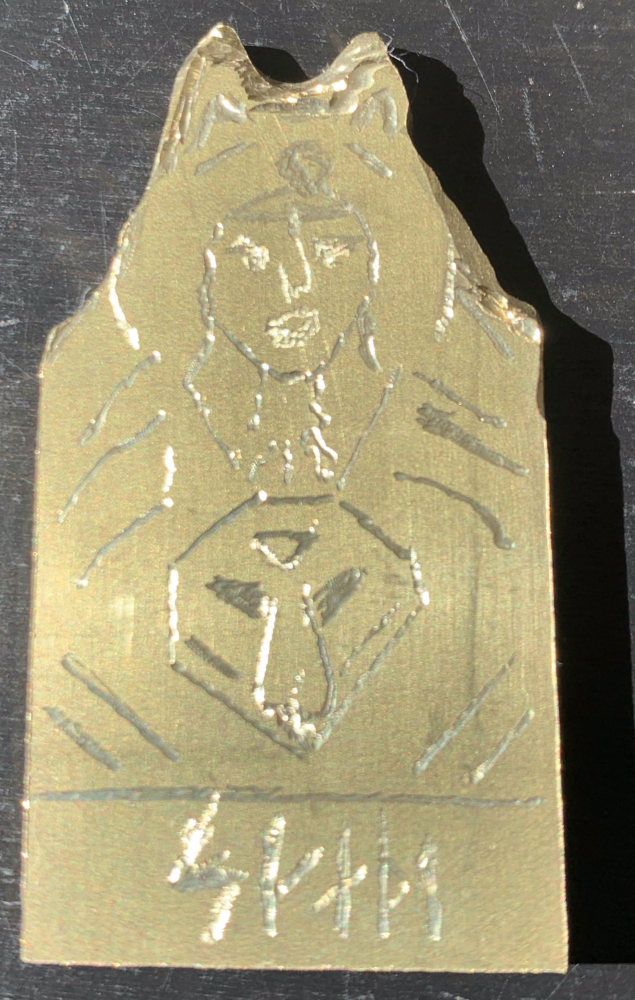
Tyr – Tyr’s Pledge
God of War, Order, and Justice. The one-armed god whose hand was ripped by the wolf Fenrir after pledging no harm would befall the wolf during his binding. He features a cross with an intertwined pattern and curls in his beard and hair. Similarly, to sacrificing his hand, Tyr will allow the player to sacrifice HPs to destroy the opponent’s GF tiles. [(4,2GF/HP), (6,3GF/HP), (8,4GF/HP)]
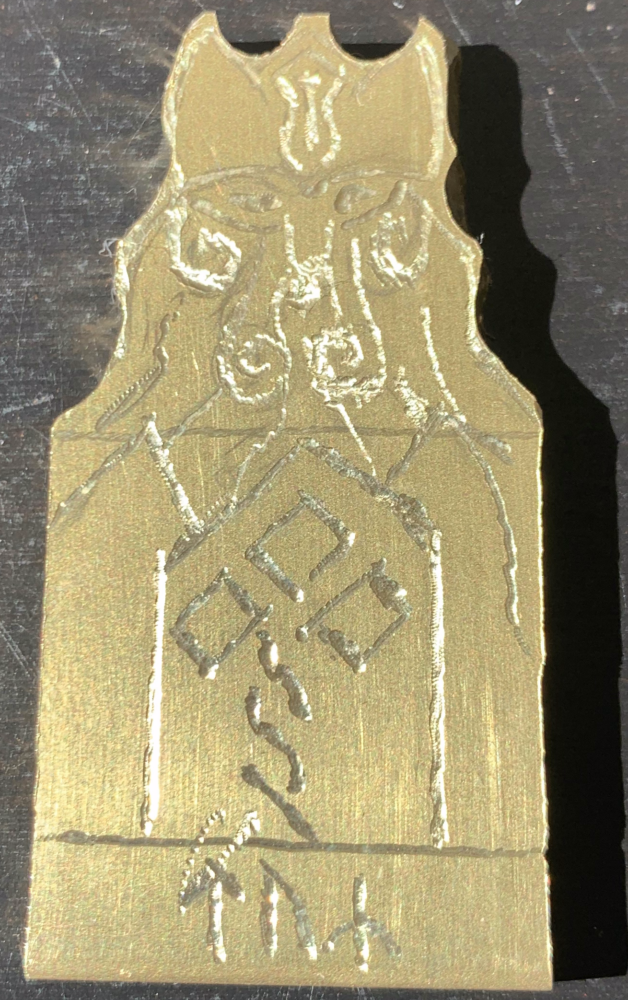
Baldr – Baldr’s Invulnerability
The God of Light, Joy, Purity, and Summer Sun. This son of Odin and Frigg was protected by an oath made by every living creature in all the realms to not harm him, except a small mistletoe tree. Out of jealousy, Loki made a spear from the mistletoe, which killed Baldr. An opportunity to resurrect arises if every living creature weeps for Baldr. Every creature did except Loki. Baldr’s invulnerability is shared with the player by multiplying both helmet and shield defenses. [(3,x2),(6,x3),(9,x4)]
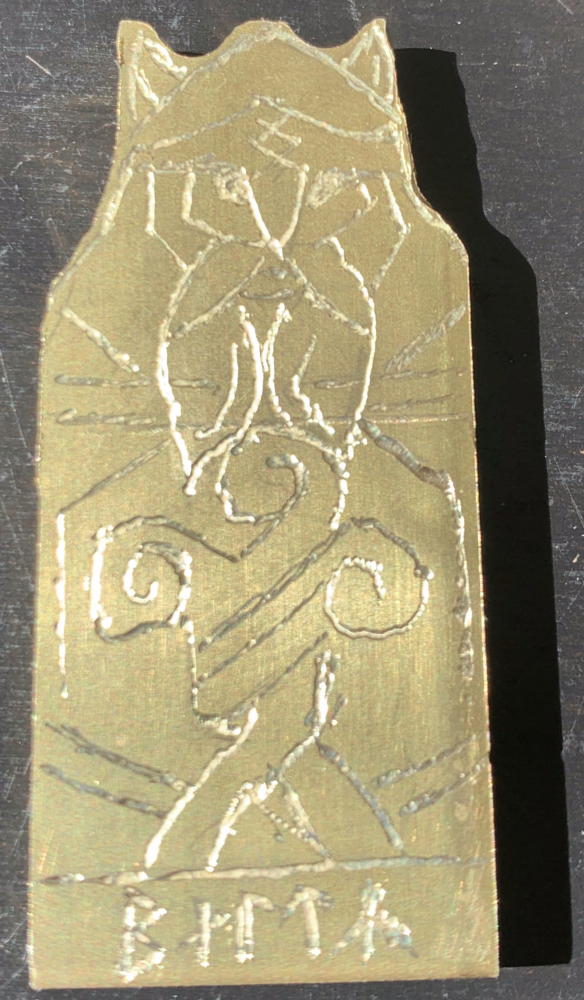
Freyr – Freyr’s Gift
God of the Harvest and Peace. Twin brother of the goddess Freyja. He features a shield, a helm, and a similar necklace to the one his sister has. This god’s ability allows the player to add to whichever die is in the majority. [(4,2),(6,3),(8,4)]
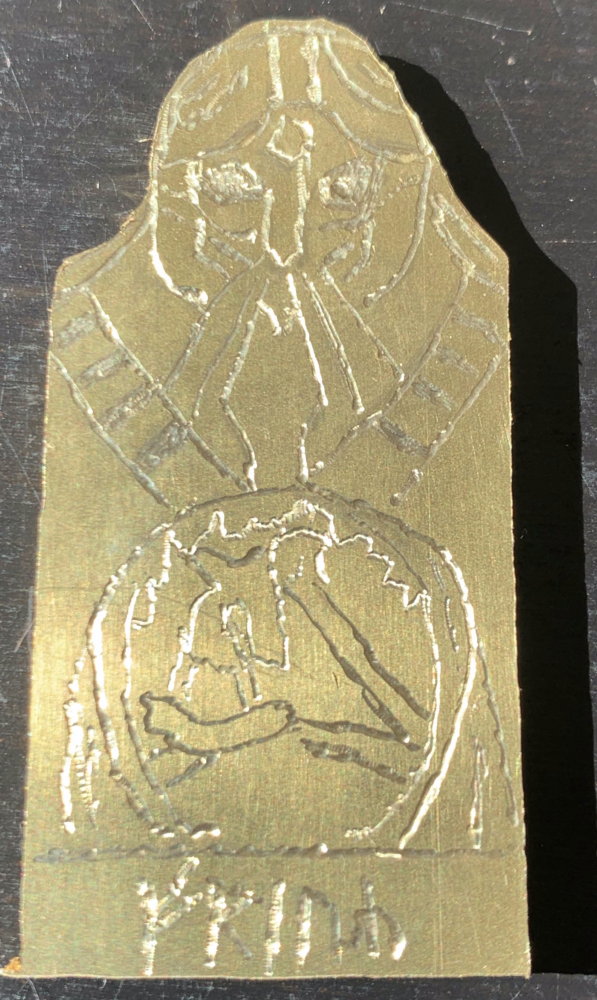
Mimir – Mimir’s Wisdom
The wisest of the Aesir gods, Mimir, was beheaded during the Aesir-Vanir War. His figurine shows his age through a long beard. He is also missing an eye, which he lost to obtain knowledge, like Odin. Mimir’s ability allows the player to gain GF tiles for each damage dealt to the opponent [(3,1),(5,2),(7,3)]
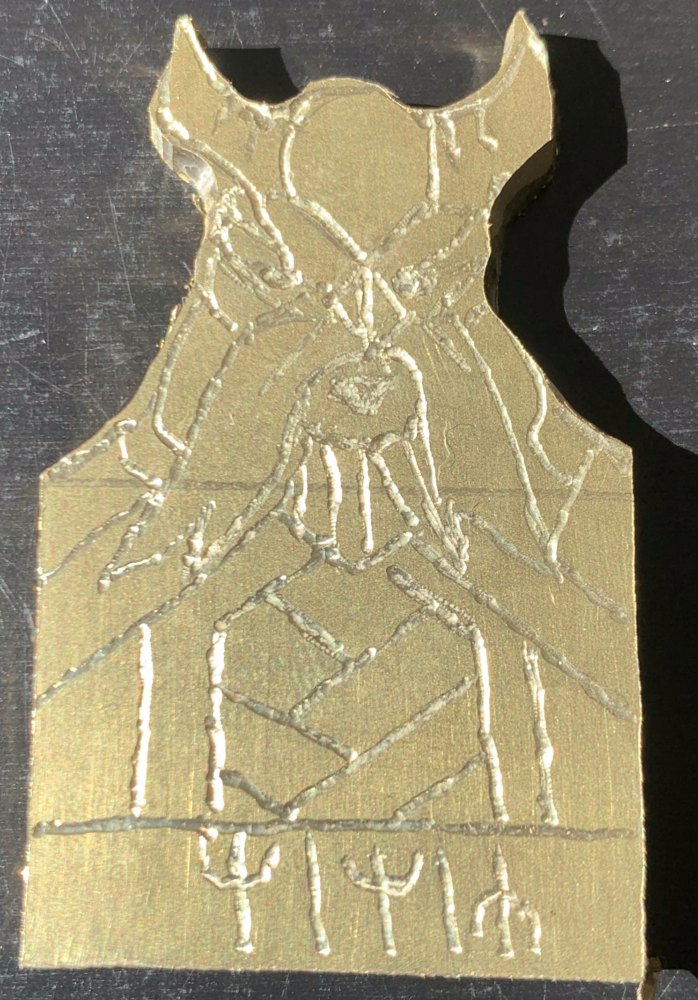
Idun – Idun’s Rejuvenation
The keeper of the magic apples of immortality which the gods eat to preserve their youth. She is the Goddess of Spring and Rejuvenation. Her figurine features her beauty as well as a basket of the magic apples she protects. Her ability recovers the player’s HP after the resolution phase. [(4,2),(7,4),(10,6)]
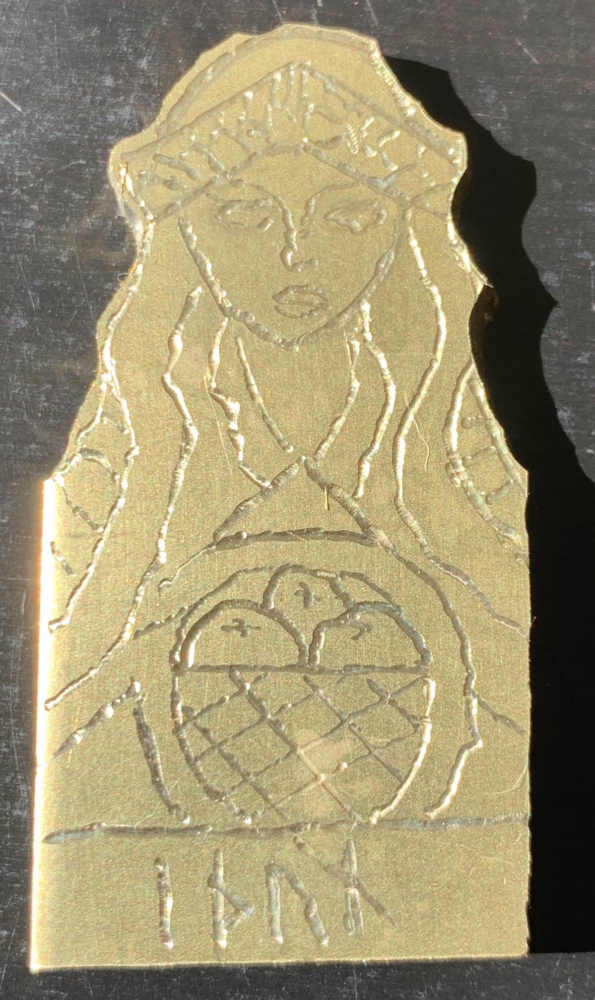
Closing Thoughts
This project taught me the intricacies of pattern design and how to better use materials and tools to create aesthetically pleasing artifacts. I am now better with Pyrography, carving and engraving with a Dremel tool, cutting with a Jigsaw, and sketching figures. This project also taught me how valuable artifacts were in the Middle Ages; it is amazing that even with the lack of modern tools, people were still able to create incredible pieces of art. The amount of time and effort that went into those projects makes me understand how much they valued even the simplest artifacts. I also learned about Norse mythology during this project, especially the origins and relationships between the gods. Finally, I am happy because I have a fully equipped game of Orlog which I can use to play with my friends. Here is a picture of the resulting game with all components:
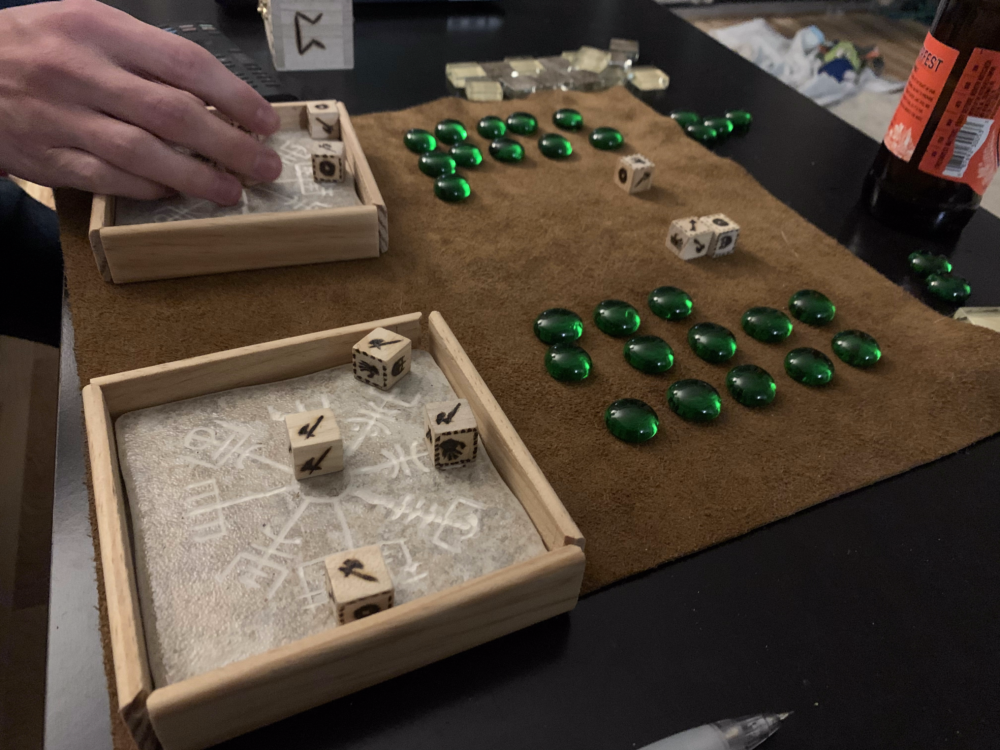
Video of a friend and me playing Orlog (before I had made the Norse God figurines):
Homemade Orlog Board Game based on Assassins Creed Valhalla – YouTube
Thank you for reading my post, if you have any questions, please leave them in the comments below!
Sources and Relevant Information:
https://en.wikipedia.org/wiki/Viking_art
https://sonsofvikings.com/blogs/history/viking-art-styles
https://smarthistory.org/viking-art/
https://www.historyonthenet.com/viking-art
http://www.hurstwic.org/history/articles/manufacturing/text/norse_art.htm
https://www.norsetradesman.com/blogs/news/how-to-read-runes
https://norse-mythology.org/gods-and-creatures/the-aesir-gods-and-goddesses/tyr/
https://grimfrost.com/blogs/blog/carving-runes
Interesting video on Baldr’s story from Dr. Jackson Crawford, Director of Nordic Studies at the University of Colorado
Other Links:

2 Comments. Leave new
Hi Gary,
Wow, I am so impressed with your attention to detail. I appreciated the background you provided about the Viking culture, writing, and symbols. Some aspects I would have thought were Celtic instead of Viking so your information taught me some differences. You spent a great deal of time and effort learning new skills to create this game. The custom-made dice caught my eye because of the use of a wood-burner. I personally have a wood-burner kit that I have yet to use because I had not found any inspiration, but I really like the appearance of your dice and I might have to give it a try sometime. I know you will have your game to enjoy for years to come!
Hi Gary, I’m impressed you were able to make such detailed game pieces in a relatively short period of time. I think the wood burned dice especially turned out very nice. What are some common strategies or moves that are played during the game? Do any of the figurine abilities counter another?